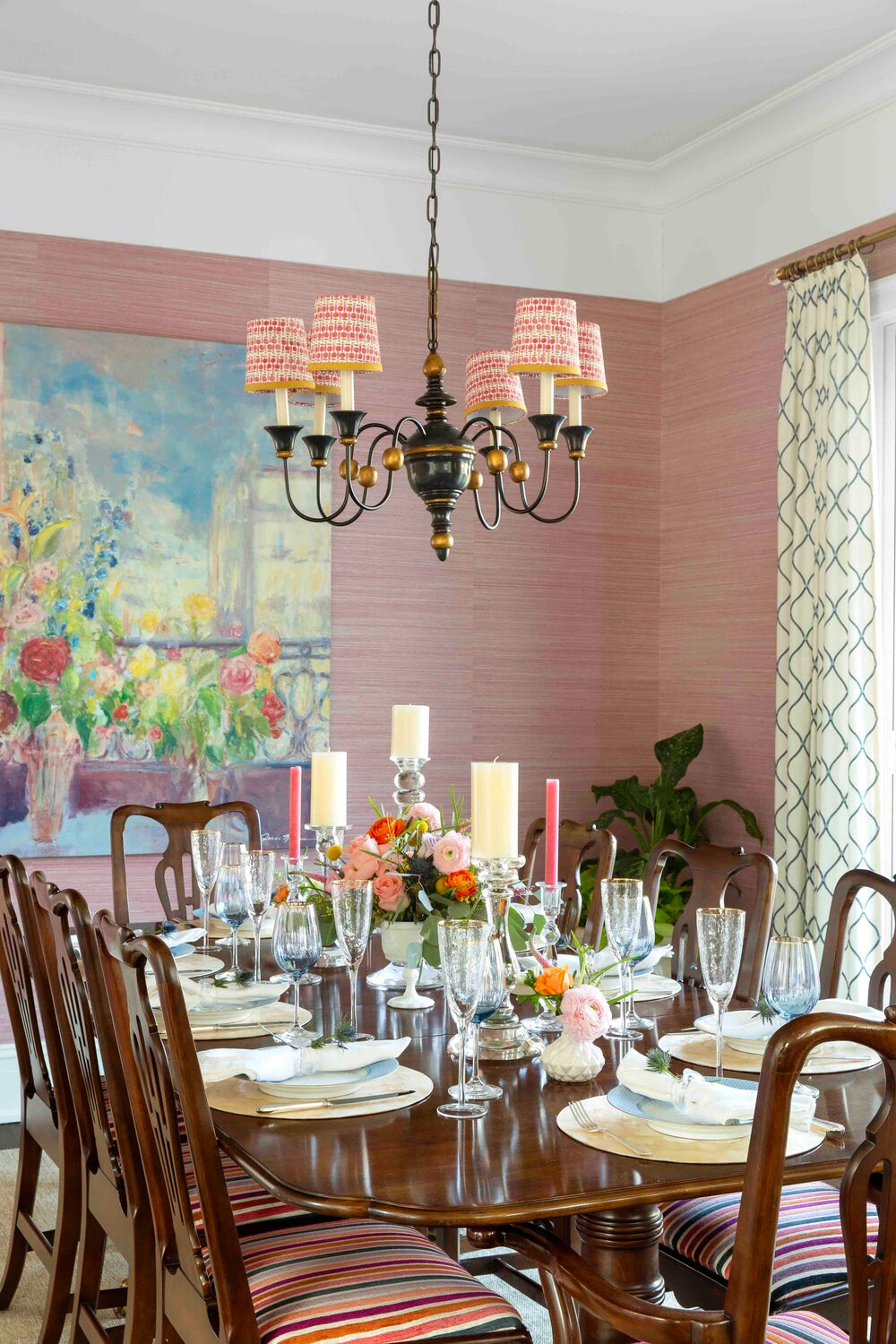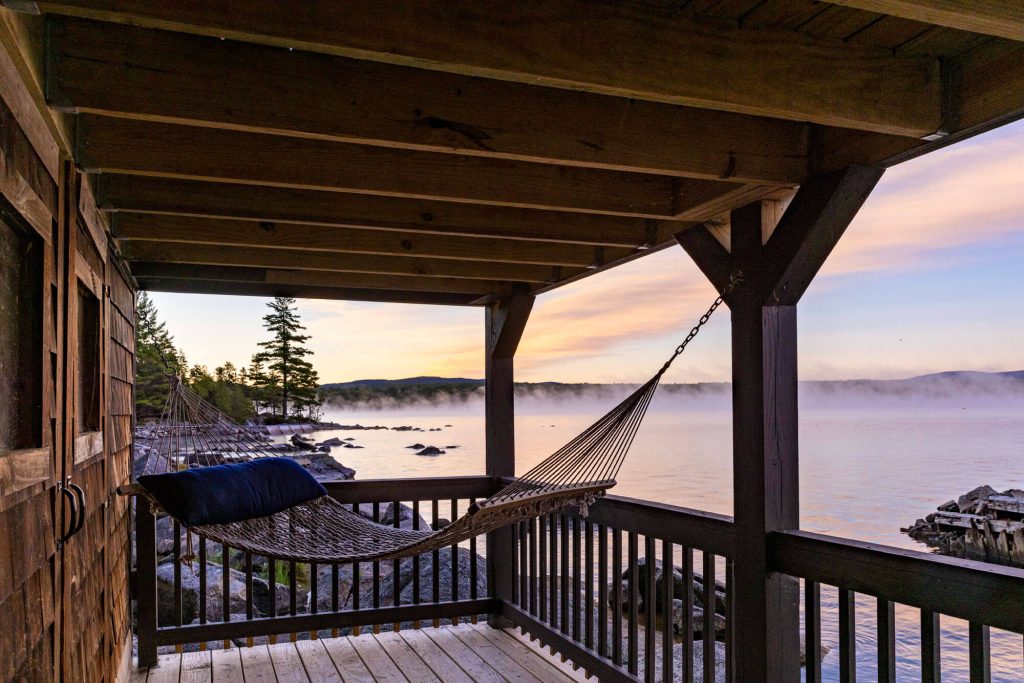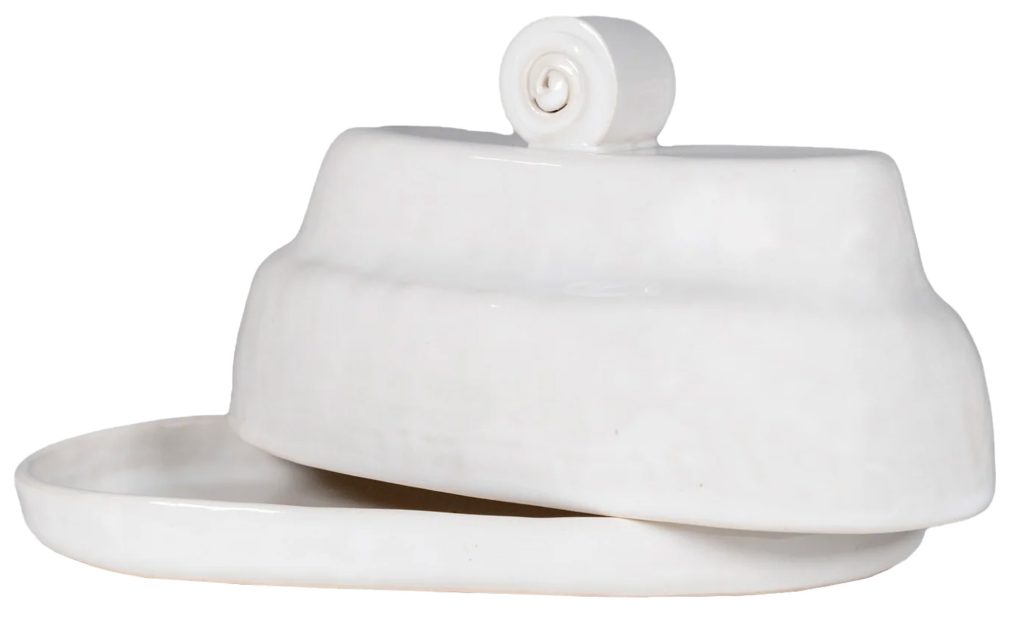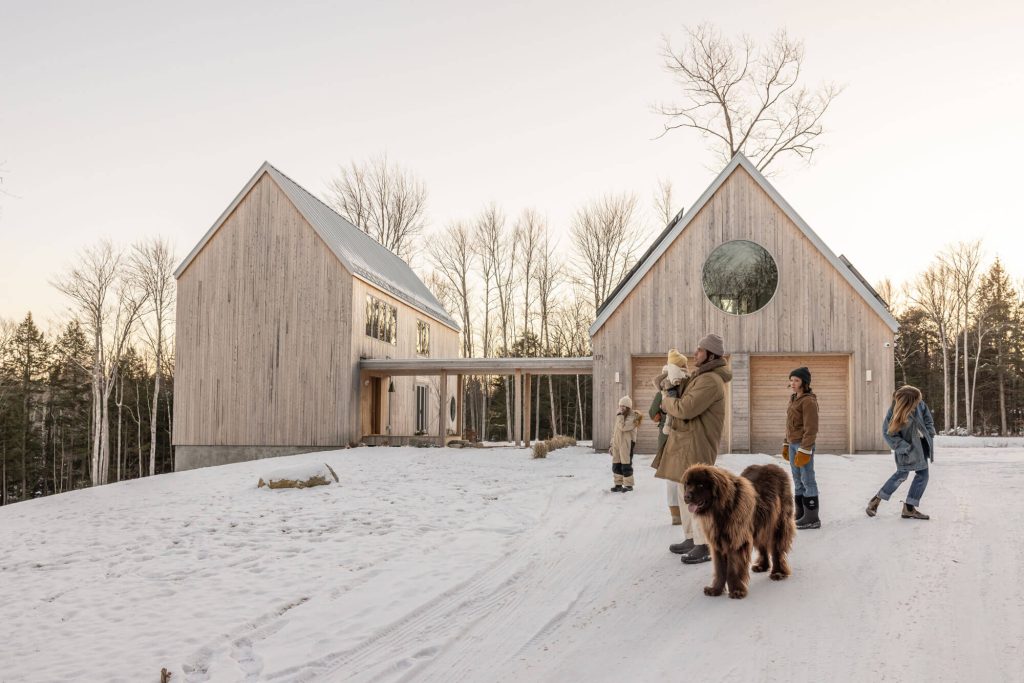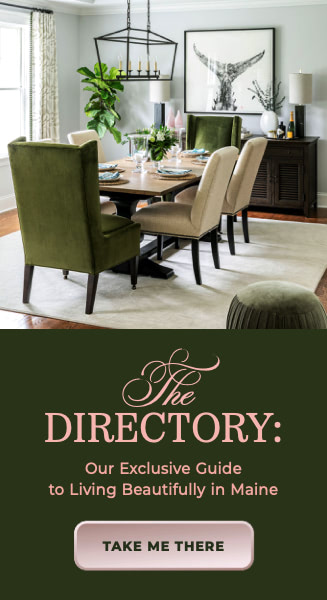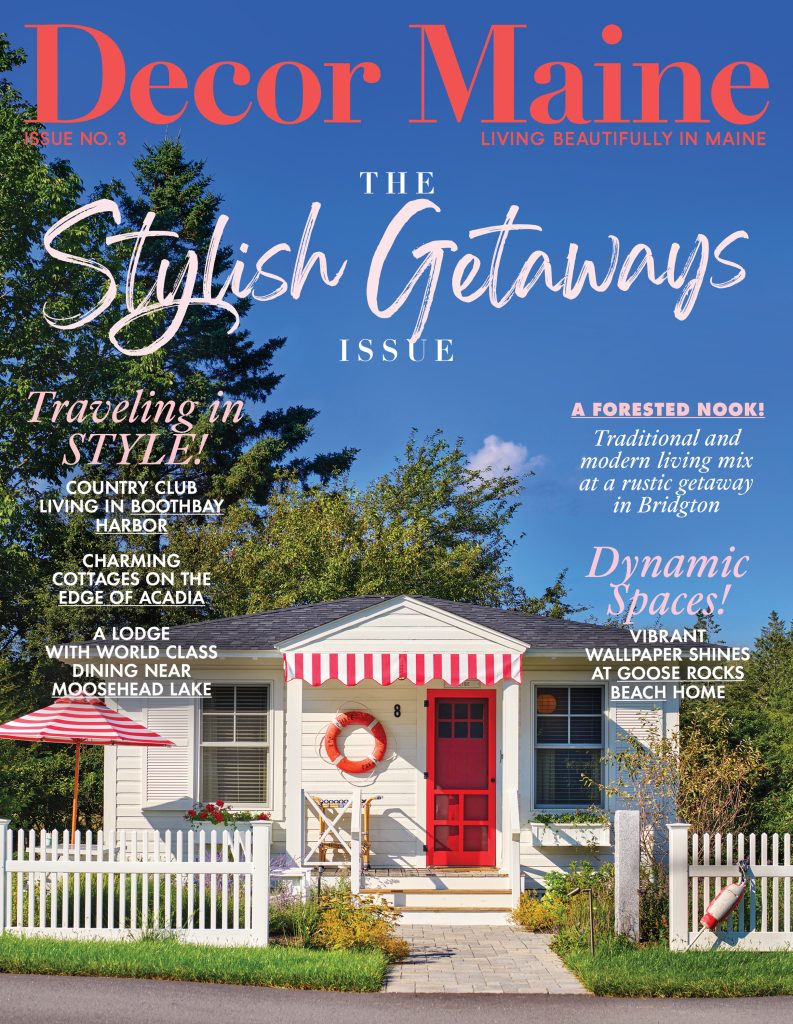Bid your farewells to the cool-toned color schemes and sparse spaces of the early 2000s. This year, a collective yearning for comfort, community, and creative expression is moving in—themes apparent in bold and brave new choices inspired by a mass state of deeply personal awakening.
The shock of a global pandemic just two months after the start of a new year—and a new decade—revealed an unexpected silver lining, and it’s unfurling on walls across the state in a vibrant metamorphosis. The year 2021 will be one of celebrating design and decorum on an intimate level, the four walls and a roof that surround us becoming a canvas for which to, as Arisa White says in Decor Maine’s July 2020 issue, “give decoration to our inner lives.” Here, we share a snapshot of what to expect—and look forward to—in 2021.
COLOR, PATTERN, AND TEXTURE

The end may be near for all-white and sparse-gray interiors, much to the delight of designers and decorators. “There is a collective yearning for warmth and intimacy that is being expressed through paint choices,” says professional color consultant Lisa Bossi of Spruce Color & Design in Brunswick, adding, “People are caring less about what’s ‘in’ per se, and focusing more on how they want to express themselves.” Interior designer Laura Pierce concurs: “There is a new collective comfort with color. People are no longer afraid to use paint to their advantage.”
This departure from monochromatic palettes reaches beyond the home. Brooke Beaney, proprietor of the popular Portland clothing shop JUDITH, notes, “Customers are recognizing the ease of tonal dressing and within that a desired mix of textures and fibers.” Accessories like playful socks and colorful earrings are in high demand, along with tops in colors that pop in Zoom meetings. “People want items in shades that excite them and instill a sense of optimism.”
Keep an eye out for walls (and clothes) bathed in romantic wine and coffee tones—which Priscilla Band Weston of Bowen Richards in South Berwick predicts will be “juxtaposed by soft-line, curvy furniture”—moody hues, and earthy yellows, clays, greens, and warm beiges, like Farrow & Ball’s Oxford Stone. Accessorizing these vibrant interiors with playful and emotional artworks—American painter Hunt Slonem and local favorite Reggie Burrows Hodges are attracting local, national, and international attention of late—signifies a shift away from what Falmouth-based gallerist Liz Moss calls “analytical abstraction.” Liz predicts a revival of “Victorian interior decor with a modern twist” instead for 2021, that will “utilize ornamental, bright artworks and complicated patterns.”
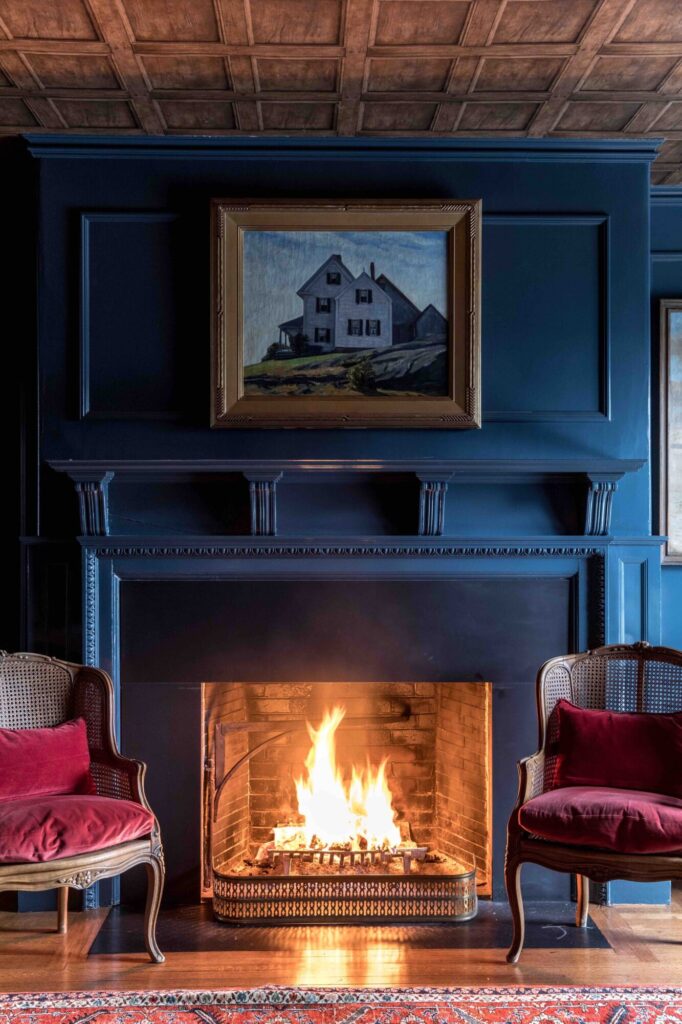
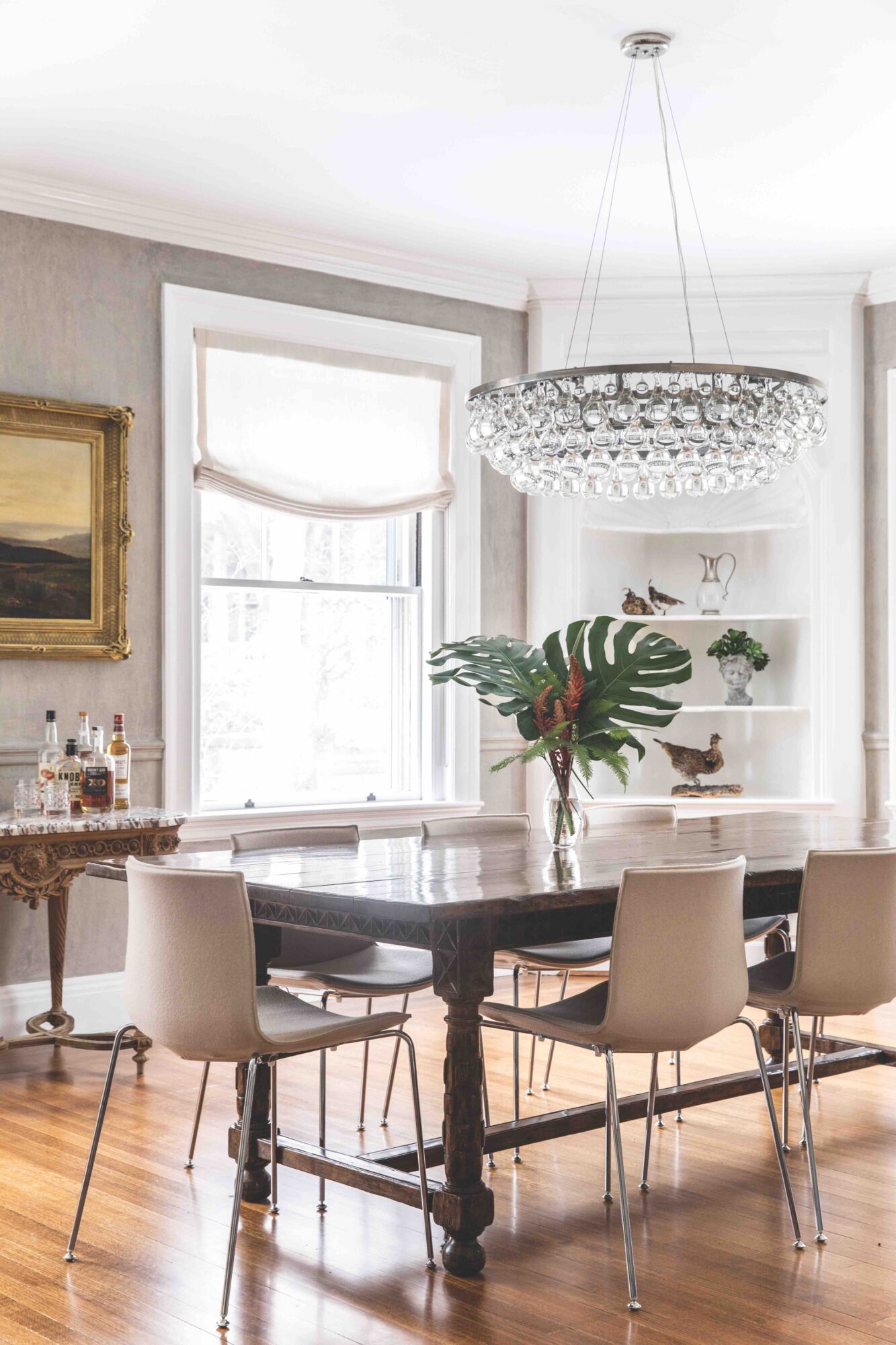
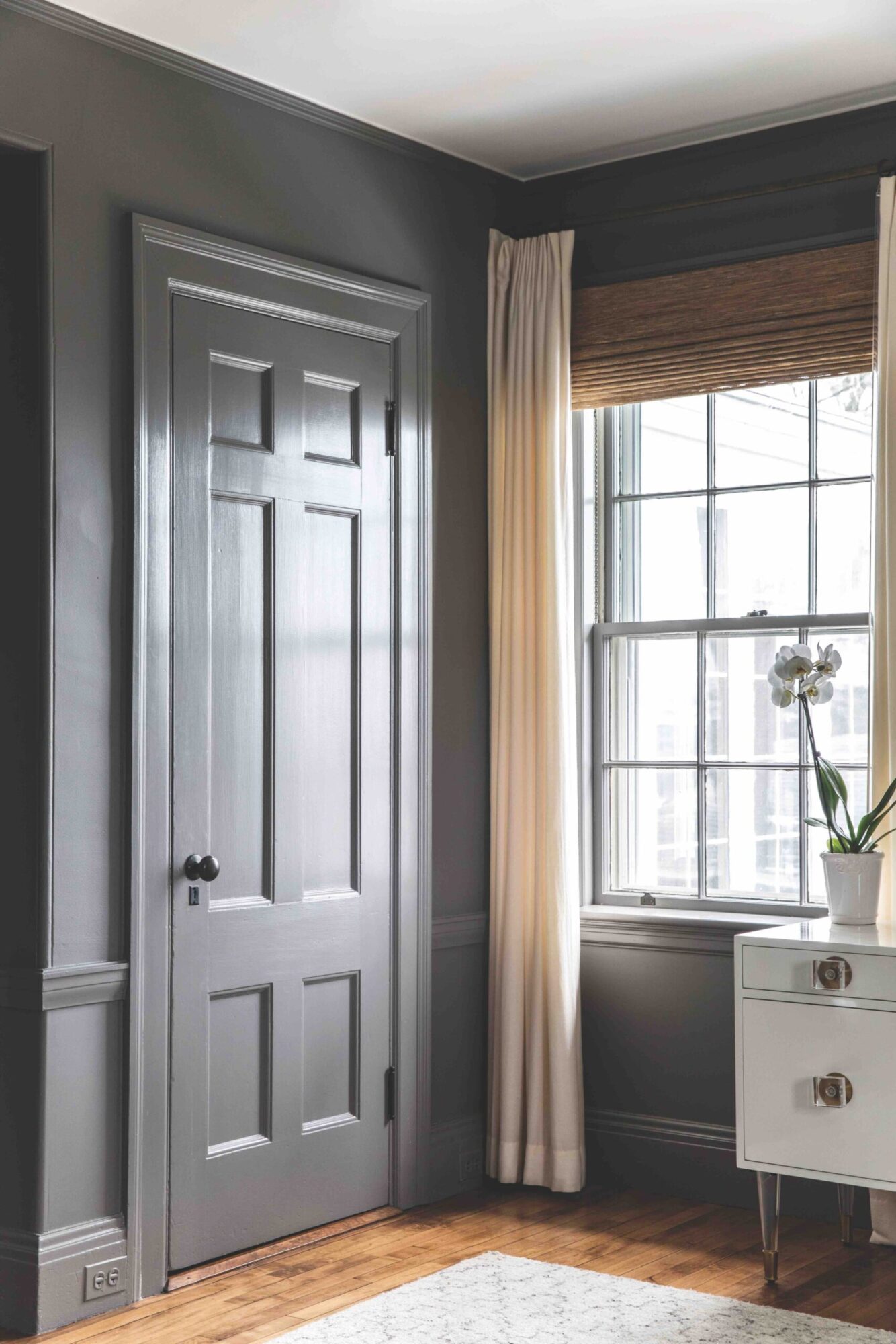
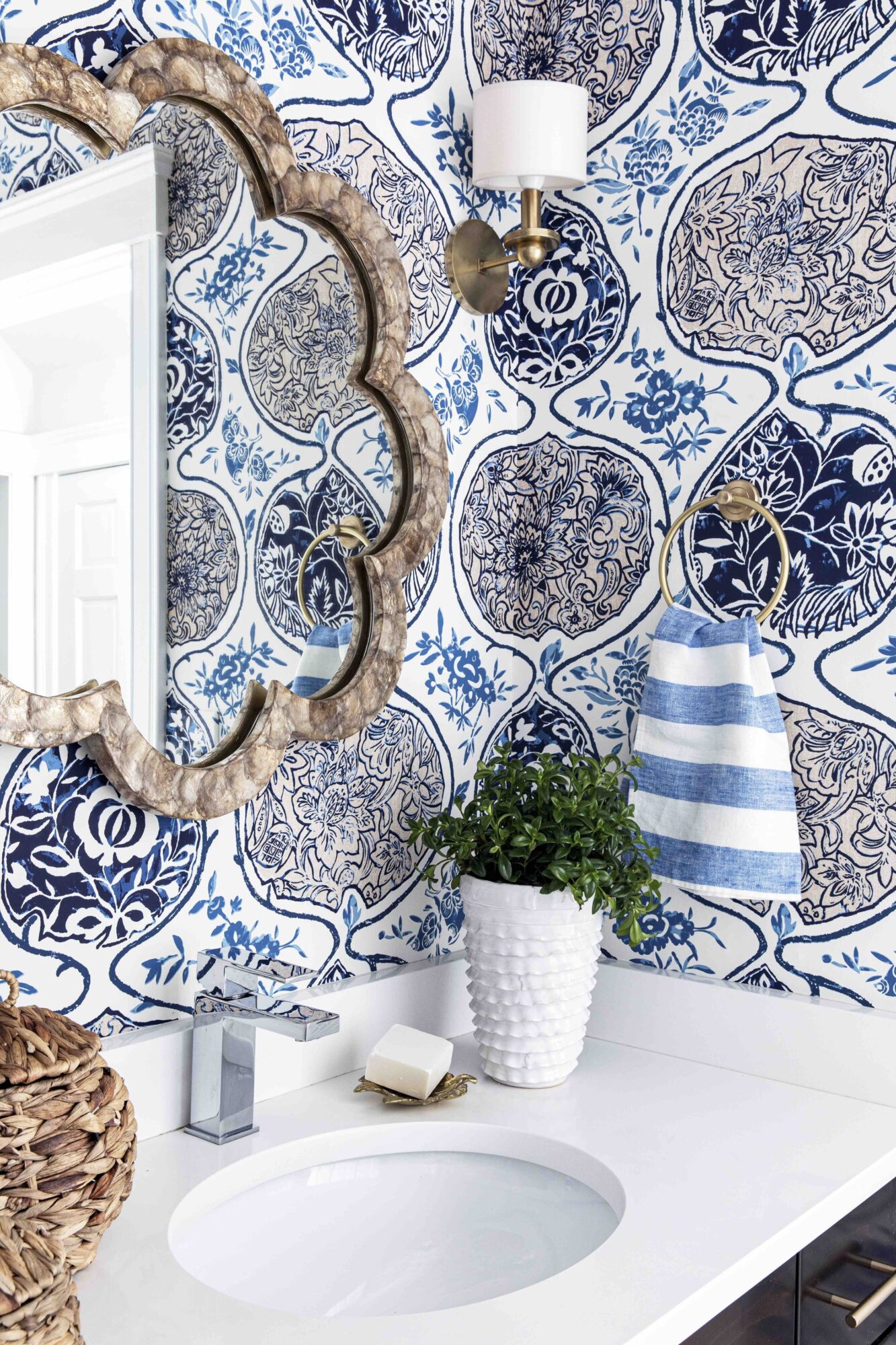
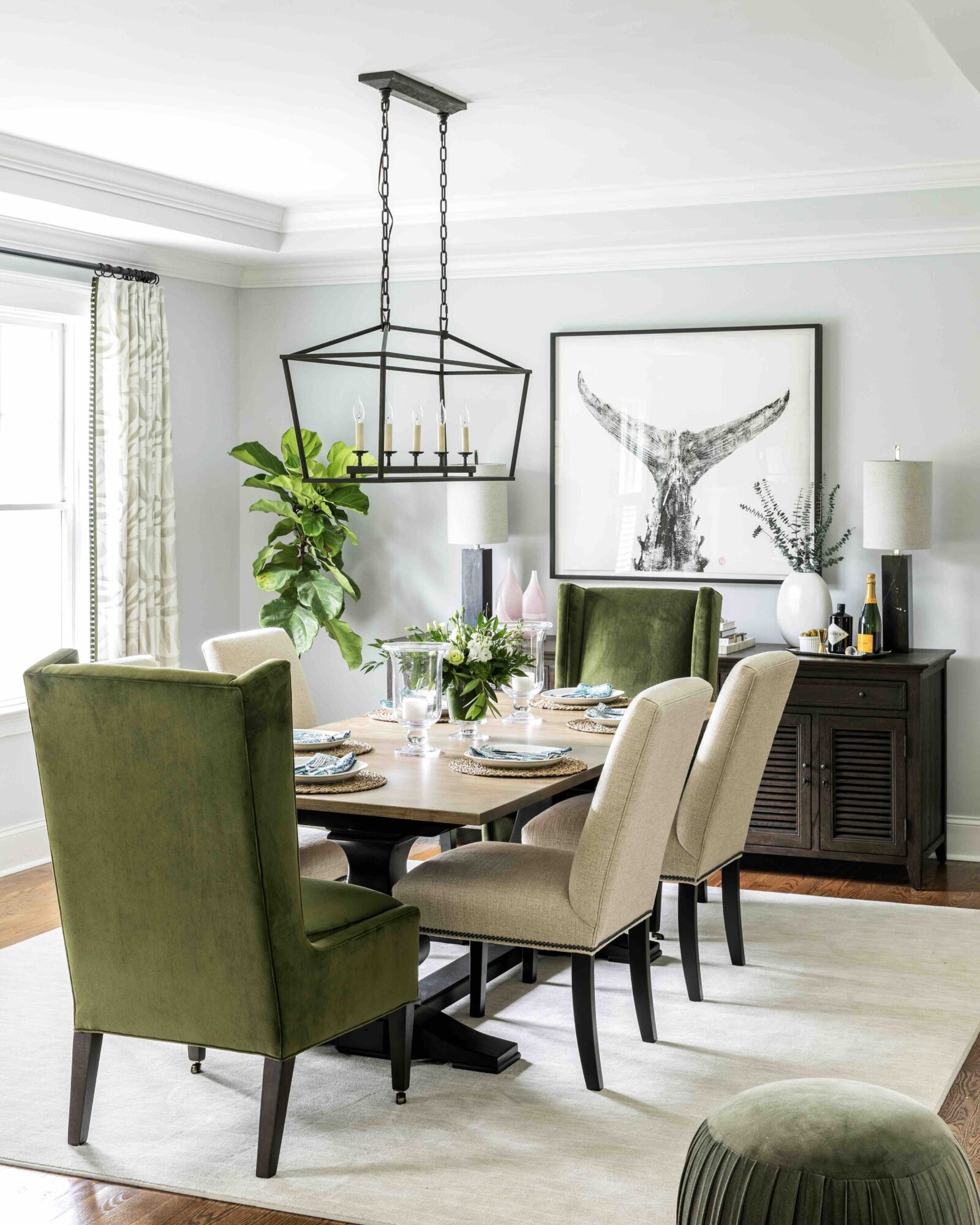
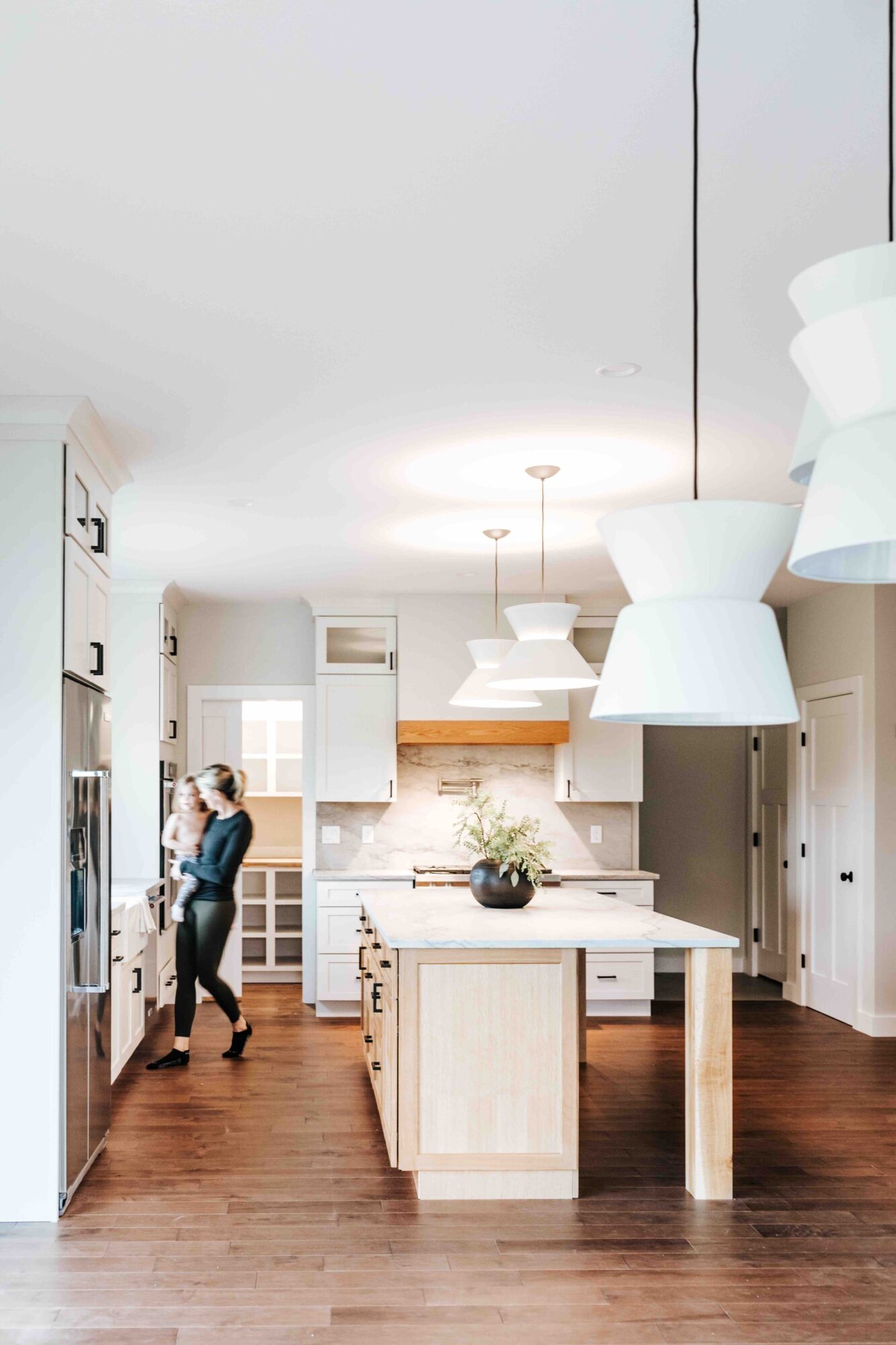
“Grandmillennial” style (a term coined by writer Emma Bazilian earlier this year) has revived items that were seemingly on the outs. “Right now, everyone wants to feel comforted above all else,” says Christine Myrick, proprietor of the Freeport-based home and body brand Tidal Living. “There’s a craving for traditional, classic comforts—items, patterns, and even scents—that evoke a sense of nostalgia.” Among the revived are grass cloth and botanical wallpaper, and wicker and rattan furnishings. “Rattan works in a variety of rooms and decor styles, adding warmth and charm. Peeled rattan is also environmentally friendly and more sustainable than man-made materials,” explains Knickerbocker + COVE’s procurement specialist Darci Q. Jackson.
Finally, expect to find textured biophilic elements indoors this year. “Wood textures and accents on walls, expressed in the form of modern pieces or paneling are becoming really popular,” explains interior designer Samantha Pappas. Erica Vargo of Outside-In Maine in Cape Elizabeth agrees, summarizing: “There is art in everything that is alive and natural. Since the beginning of quarantine in March, people have really begun to crave a deeper connection to the world around them. That connection starts with nature.”
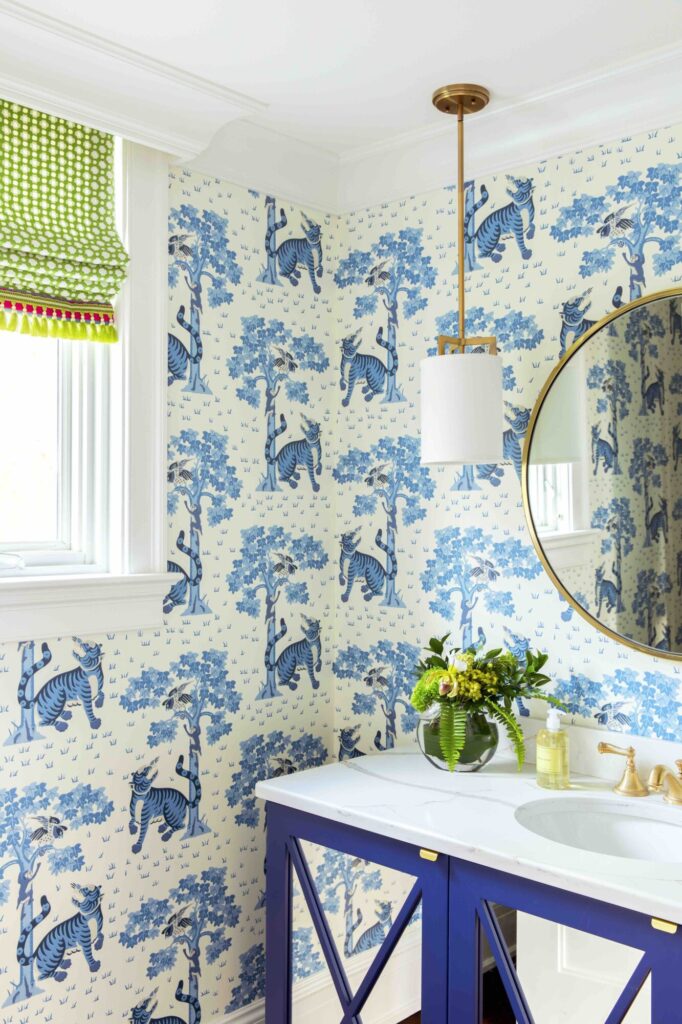
MULTIFUNCTION
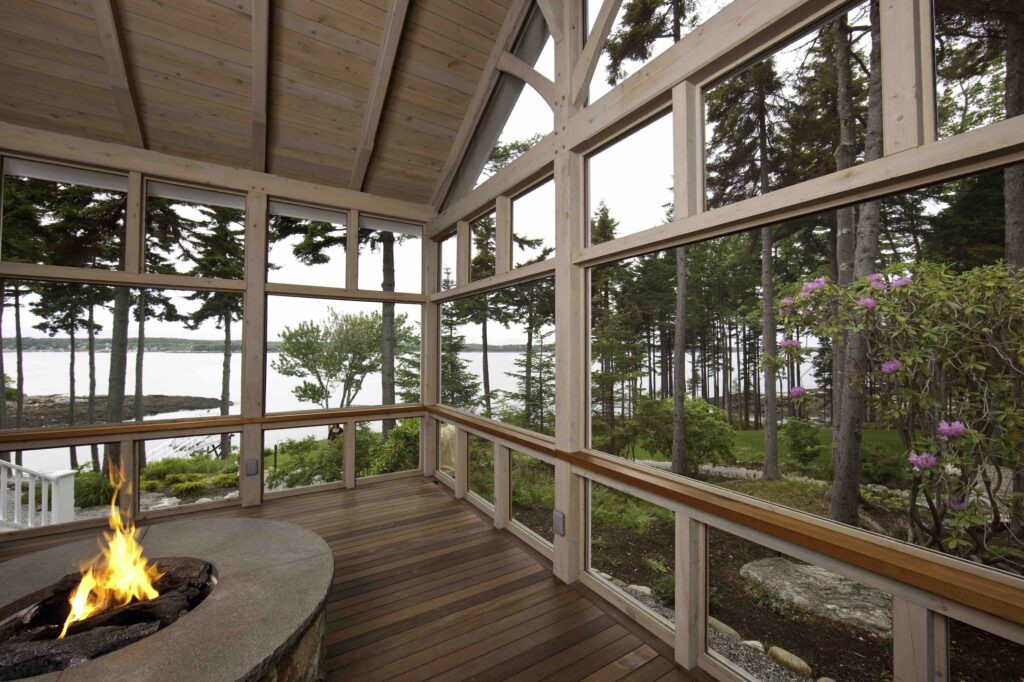
Working—and schooling, cooking, eating, entertaining, and exercising—from home has created a demand for multipurpose, multidrawer, multifunctional everything. Interior designer Ariana Fischer explains that “having furniture that can be multipurposed given the occasion or need allows for dynamic living. Being able to move items around—think a desk chair as dinner seat and living room lounge—makes investing in a great piece totally worth it.”
Mike Timchak of Windsor Chairmakers in Lincolnville has taken countless new requests for custom desks, coffee tables, and bedside tables built with extra storage compartments. Jen Levin of Chilton Furniture says, “Since we can’t all have a separate work-from-home room, many are investing in quality dining room furniture, primarily tables, to use as makeshift home offices.”
One of Laura Pierce’s clients recently reimagined a guest bedroom as an entertainment space, bedroom, and home office. “We created lots of built-ins—including bookshelves and a TV cabinet—with the intent being that at the end of the day, the office and TV could both be neatly folded up and stored away, leaving a relaxing space for a guest to sleep.”
Expect 2021 to bring with it a surge in primary suite renovations—of which architect Leslie Benson reports she’s had lots of requests—splurges on in-home workout, yoga, and meditation spaces as predicted by Melissa Akers of Melissa Ellen Designs in Bridgton, and a rise in the ever-popular “she sheds,” as noted by Priscilla Band Weston. Will the wide-open kitchen, dining, living, and entertainment layouts survive the year? Stay tuned, as 2021 leaves homeowners desperate for privacy in the form of walls, doors, and cozy nooks and crannies.

INNOVATION

This new year leaves no laggers in innovation. From the art realm to green builds to lighting, this year brings expert adaptability from professionals on all fronts.
Grace Rote, senior lighting specialist at Reflex Lighting underscores two up-and-coming additions to the lighting industry: disinfectant lights—notably manufactured by Healthe Lighting—and circadian rhythm lighting. “Tunable white lighting is becoming really popular in schools, hospitals, and residential homes,” Grace says, adding, “Particularly in residences, you may see this in ‘dim-to-warm’ technology. Light is bluer at full brightness, and as you dim, it becomes warmer, almost like a sunset. It’s amazing how this affects mood, especially when we’re mostly in the same space all day.”
According to Jesper Kruse of Maine Passive House in Bethel, “a search for [and implementation of] more natural building materials” is a trend recently intensifying in the green-building community. After learning that a newly built passive house—constructed with energy-intense materials (like XPS foam)—could actually release more CO2 over a lifetime than a home built to code, Jesper became even more intent on sourcing locally. “For a large upcoming commercial project we are planning to insulate with straw, rather than our current favorite, cellulose. In general, using Maine wood products is a no-brainer. It’s local, and the wood stores carbon,” Jesper says.
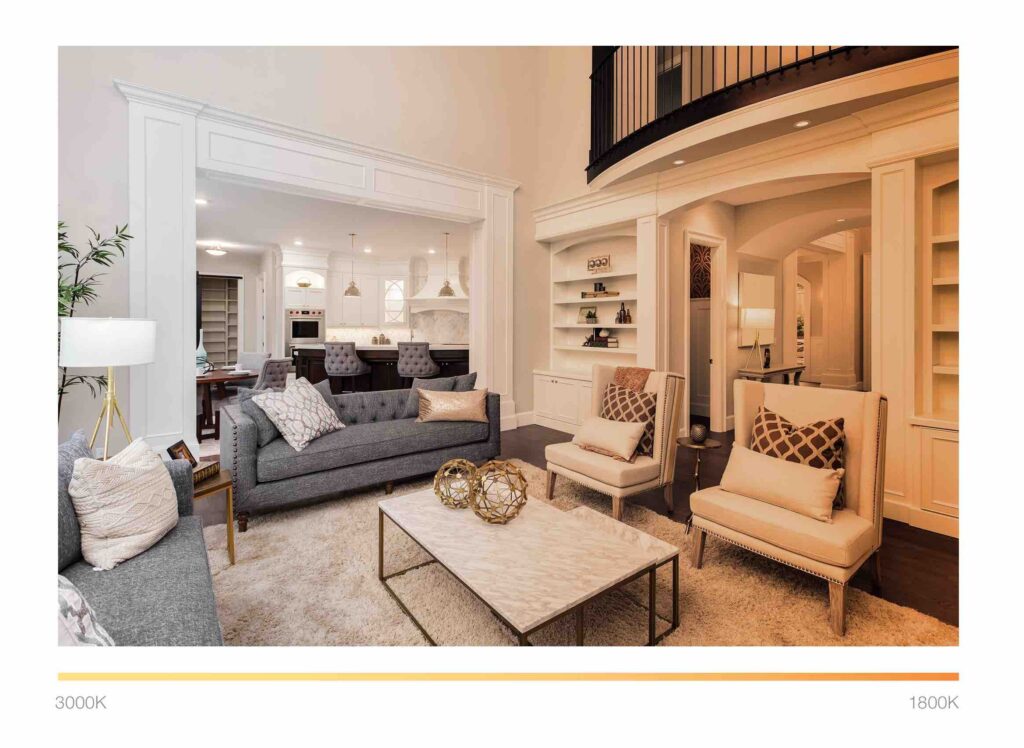
“We’ve seen a strong emphasis on designing not only for today’s utility but also for tomorrow and the coming decades,” says Evan Dyer of Rockport Post & Beam. “Designers are finding a balance ebtween timeless features and the use of new, innovative technologies, like cuttinf-edge mechanical systems, new building science, and making passive solar a priority.”
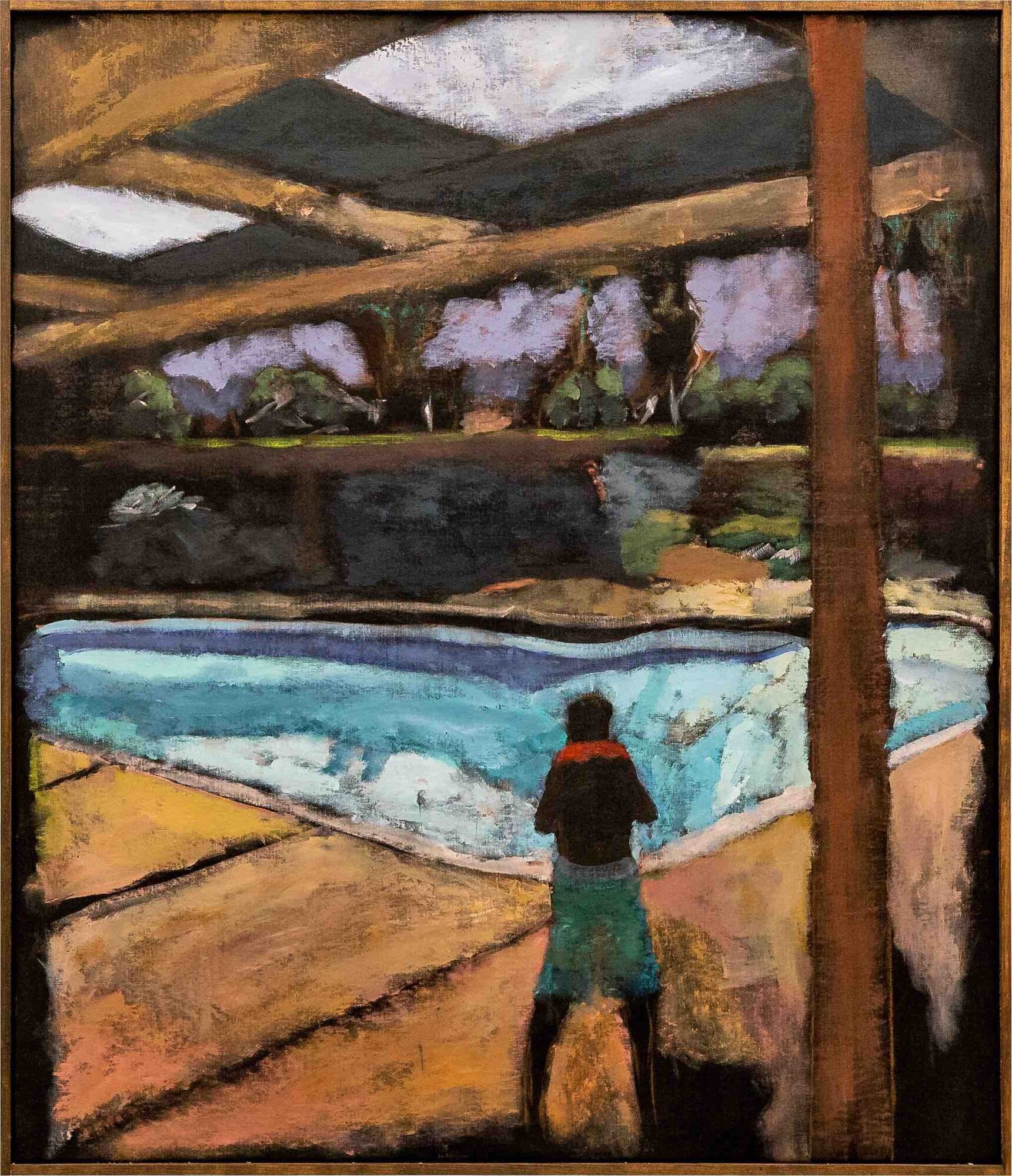
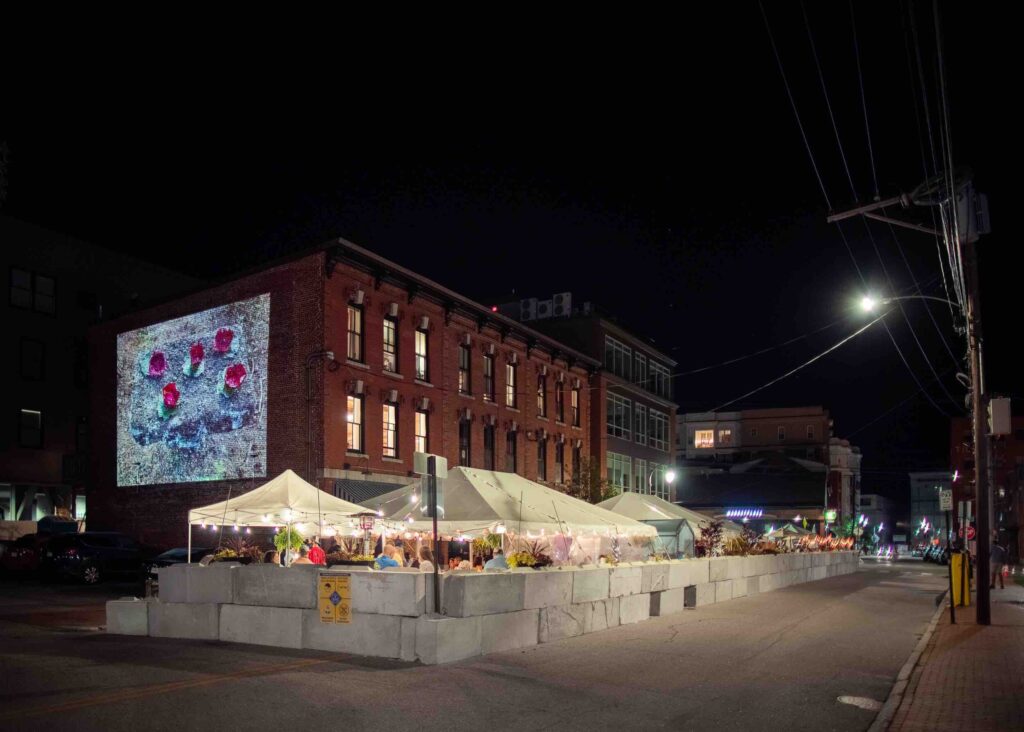
“The pandemic has forced us to reimagine how we view and experience artwork,” says Leah Igo, Maine College of Art’s director of marketing and communications. Finding creative viewing solutions, like outdoor installations and displays (which curator Donna McNeil underscores as crucial in spreading awareness in response to social justice issues), and artistic facial coverings and masks has “allowed individuals to continue to experience art outside of a gallery setting during these trying times,” Leah says. Gallerists Liz moss and Kiersten Wilcox both cite successful efforts to turn the gallery experience digital through social and email campaigns, livestreaming, and innovative virtual mock-ups, allowing more people to experience Maine-based curations and artists alike.
![According to Jesper Kruse of Maine Passive House in Bethel, “a search for [and implementation of] more natural building materials” is a trend recently intensifying in the green-building community. After learning that a newly built passive house—constructed with energy-intense materials (like XPS foam)—could actually release more CO2 over a lifetime than a home built to code, Jesper became even more intent on sourcing locally. “For a large upcoming commercial project we are planning to insulate with straw, rather than our current favorite, cellulose. In general, using Maine wood products is a no-brainer. It’s local, and the wood stores carbon,” Jesper says.](https://www.decormaine.com/wp-content/uploads/2022/07/bunnies-1486x2000.jpg)
![According to Jesper Kruse of Maine Passive House in Bethel, “a search for [and implementation of] more natural building materials” is a trend recently intensifying in the green-building community. After learning that a newly built passive house—constructed with energy-intense materials (like XPS foam)—could actually release more CO2 over a lifetime than a home built to code, Jesper became even more intent on sourcing locally. “For a large upcoming commercial project we are planning to insulate with straw, rather than our current favorite, cellulose. In general, using Maine wood products is a no-brainer. It’s local, and the wood stores carbon,” Jesper says.](https://www.decormaine.com/wp-content/uploads/2022/07/mural-scaled.jpg)


COMMUNITY
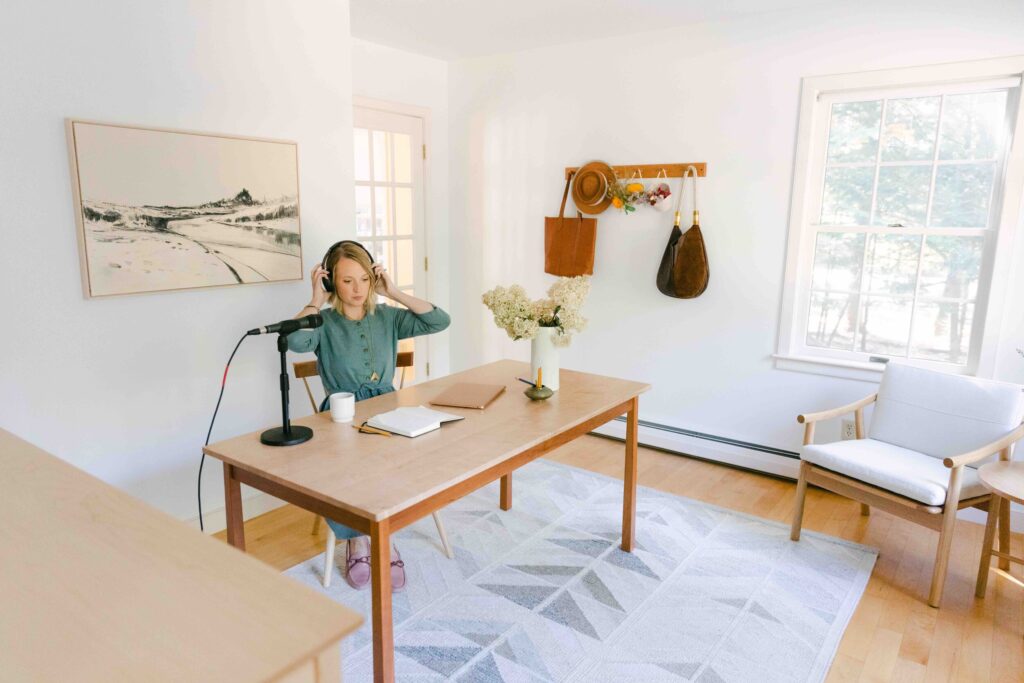
Reflecting on life prepandemic, Erica Vargo says: “The natural part of what makes us human, and our basic connections with each other, really got lost in the rapid pace of society.” However, according to Christine Myrick and others, that’s all changing. “Support local and ‘support small’ is a really popular ideology right now,” says Christine, adding, “There’s a pull to contribute, to help our neighbors stay afloat with intentional purchases that support the local community.”
A dramatic home office transformation by Chilton Furniture team member and interior designer Abigail Shea exemplifies this calling to support local in a big way. Makers of Maine podcast host Kristan Vermeulen worked with Abigail to revamp her home office space from dark and drab to a Scandi-chic haven, filled with natural light and items sourced entirely from local vendors, including Chilton Furniture, Campfire Pottery, and Portland Flea-for-All. At Windsor Chairmakers, Mike says he’s started a wedding registry to help young couples—transplanted from New York, Boston, and other cities—source quality furniture as they begin their new lives in Maine, adding, “I’ve absolutely noticed a new appreciation for handcrafted goods close to home and traditional, clean-line styles. People are willing to invest more for something that will last them a lifetime.”
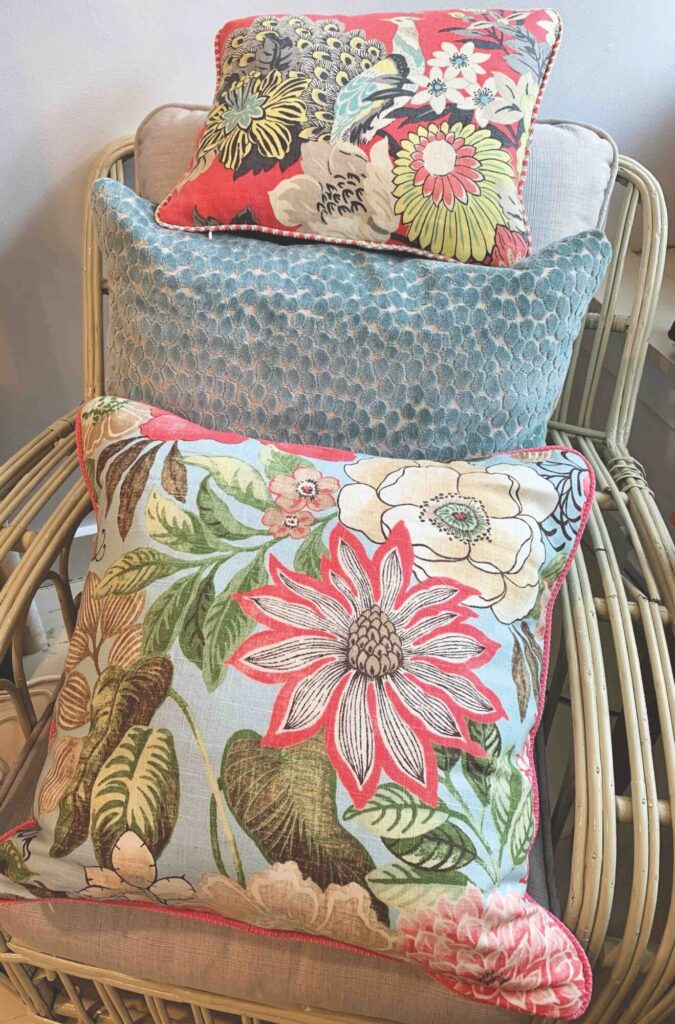
“There’s a draw to richness and tangibility,” says Johanna Thomas, owner of Zapapa, a vibrant new textile shop in Kittery. “Right now, especially, people want to identify the source, story, and sentiment of the items they are bringing into their homes. Sourcing local is a huge part of learning—and appreciating—that story.”
John Sundling, proprietor of Portland’s Plant Office, is decidedly inspired by this newfound community interest and support, concluding: “People have turned to flowers, plants, and to each other during these trying times. I hope this continues long after the residual effects of 2020 have worn off.”
